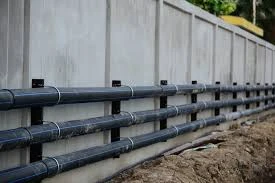Rhag . 26, 2024 22:57 Back to list
Understanding Different Types of Pipe Fittings for Effective Plumbing Solutions
Understanding Pipe Fittings The Unsung Heroes of Plumbing and Piping Systems
Pipe fittings form an essential component of plumbing and piping systems, serving crucial roles in directing the flow of liquids and gases in various applications. These fittings, which include elbows, tees, couplings, reducers, and flanges, facilitate the connection of pipes, change flow direction, and regulate the flow of substances through the network of piping. Understanding the different types of pipe fittings and their applications can assist both professionals and DIY enthusiasts in making informed decisions when establishing or maintaining piping systems.
Types of Pipe Fittings
1. Elbows Elbows are a type of fitting used to change the direction of the flow in a piping system. They come in two primary angles 90 degrees and 45 degrees. The choice of angle often depends on the specific flow requirements of the system. Using elbows helps minimize the risk of turbulence, ensuring a smoother transition of fluids.
2. Tees As the name suggests, tees are shaped like the letter 'T' and are used to create a branch in the pipeline. They allow for a connection to a perpendicular pipe, which is essential for directing flow to different areas. Tees are available in various sizes and materials to accommodate different system requirements.
3. Couplings These fittings are used to connect two lengths of pipe together. Couplings can either be standard or threaded, depending on how the pipes are secured. They ensure that the pipeline remains sealed, preventing leaks and maintaining the integrity of the system.
4. Reducers When transitioning between pipes of different diameters, reducers are employed. A reducer can be either concentric or eccentric, depending on the specific needs of the piping system. They help to control flow rates and pressure, making them critical in scenarios where fluid dynamics need to be optimized.
5. Flanges Flanges are flat pieces of metal that allow for easy connection between pipes. They typically require bolts or screws for secure attachment, making them suitable for systems where maintenance or adjustments might be necessary. Flanges can also serve as anchors, helping to stabilize the piping system.
pipe fittings

Materials Used for Pipe Fittings
Pipe fittings can be made from various materials, each suited for different applications. Common materials include
- PVC (Polyvinyl Chloride) Widely used in residential and industrial plumbing due to its corrosion resistance and lightweight nature.
- Copper Known for its excellent thermal conductivity, copper fittings are often used in heating systems and water supply lines.
- Steel Strong and durable, steel fittings endure high pressure and temperature environments, making them popular in industrial settings.
- Brass A highly malleable alloy of copper and zinc, brass fittings are resistant to corrosion and are often used in plumbing applications where aesthetic appeal is important.
Conclusion
In conclusion, pipe fittings play an indispensable role in the functionality of plumbing and piping systems. Understanding the various types of fittings, their specific functions, and the materials they are made from can significantly impact the efficiency and reliability of fluid transport in both residential and industrial contexts. Whether you're a homeowner looking to undertake a DIY plumbing project or a professional in the field, being well-informed about pipe fittings will empower you to make the best choices for your piping needs. In an age where efficiency and reliability are paramount, the importance of these often-overlooked components cannot be underestimated. The next time you use water in your home or interact with industrial systems, take a moment to appreciate the vital role that pipe fittings play in facilitating seamless flow and connection.
-
PP U-channel: Chemical-Resistant, Lightweight & Durable
NewsAug.10,2025
-
Transparent PVC Pipe: Clear Flexible Tubing for Fluids
NewsAug.09,2025
-
Durable PP Rigid Sheet: Versatile & High-Quality Plastic Panels
NewsAug.08,2025
-
Premium Glossy PP Rigid Sheet – Durable & Versatile
NewsAug.07,2025
-
High-Quality HDPE Sheet | Durable Plastic Panels
NewsAug.06,2025
-
High-Precision PVC Rigid Sheets for Vacuum Forming | AI-Optimized
NewsAug.05,2025

